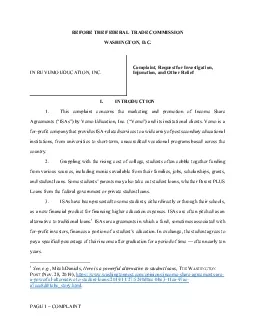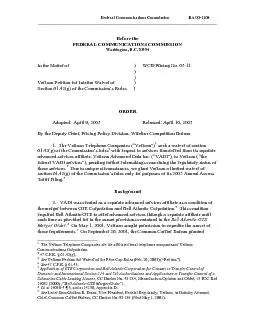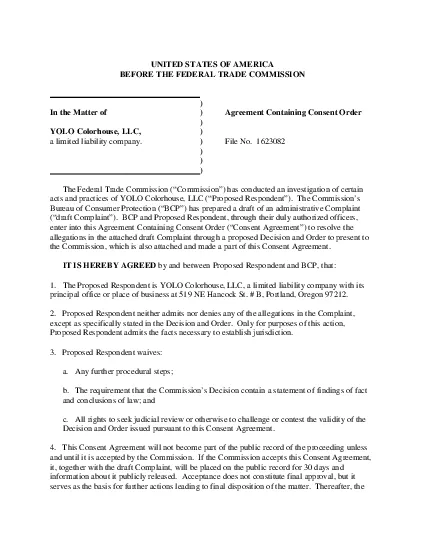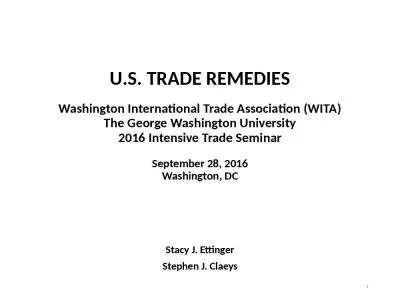PDF-PAGE 1 COMPLAINT BEFORE THE FEDERAL TRADE COMMISSION WASHINGTON DC
Author : emily | Published Date : 2021-08-20
IN RE VEMO EDUCATION INC Complaint Request for Investigation Injunction and Other Relief 1This complaint concerns the marketing and promotion of Income ShareAgreements
Presentation Embed Code
Download Presentation
Download Presentation The PPT/PDF document "PAGE 1 COMPLAINT BEFORE THE FEDERAL TRA..." is the property of its rightful owner. Permission is granted to download and print the materials on this website for personal, non-commercial use only, and to display it on your personal computer provided you do not modify the materials and that you retain all copyright notices contained in the materials. By downloading content from our website, you accept the terms of this agreement.
PAGE 1 COMPLAINT BEFORE THE FEDERAL TRADE COMMISSION WASHINGTON DC: Transcript
Download Rules Of Document
"PAGE 1 COMPLAINT BEFORE THE FEDERAL TRADE COMMISSION WASHINGTON DC"The content belongs to its owner. You may download and print it for personal use, without modification, and keep all copyright notices. By downloading, you agree to these terms.
Related Documents














